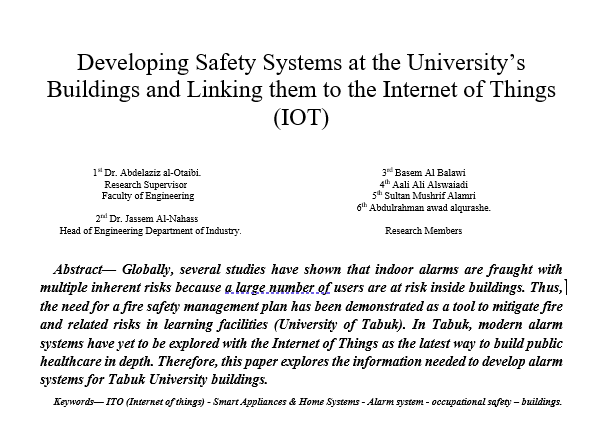
دراسة جدوى لانتاج الصوديوم هيبوكلورايت لمعالجة المياه باستخدام المحلول الملحي الناتج عن عملية التحلية لمياه البحر pdf
ملخص الدراسة:
Scarcity of water has become one of the largest challenges to human beings nowadays. Desalination has become widely use to provide safe and clean water in many countries. Brine disposal or management is a major environmental challenge to most communities. This research investigated a method for brine treatment by using technology of on-site generation of sodium hypochlorite and thus reducing the quantity of the disposed brine to the sea. The batch experiment investigated the characteristics of producing sodium hypochlorite for disinfection purposes, thus seven main factors were investigated in brine samples: electrolysis time, current intensity, surface area ratio, type of rods, distance between rods, stability of sodium hypochlorite, and stability of electrode rod. The best condition for generation sodium hypochlorite was found by using graphite electrodes, with diameter 1.3cm, the space between the electrodes was 1cm, and the electrolysis time was 120Min, at voltage 12V and at current density of 176.5mA.cm-2 with 25oC ambient temperature. The best effective concentration value of sodium hypochlorite at the previous conditions was 2.17% of brine concentration. The research is also studying the fesability of using on-site generation of sodium hypochlorite among other chlorination options that are commercial bulk hypochlorite with (12%-15%) concentration and bubbling chlorine gas into dilute sodium hydroxide which generate sodium hypochlorite with concentration (3%-6%). The research studied four aspects affecting on the choosing of the best chlorination procces that are the environmental, health and safety aspects, the economical aspects, the political aspects and the operational aspects. The research concludes that using sodium hypochlorite generated on site was the most cost-effectiveness option among other options and it recommends running it instead of the commercial bulk hypochlorite which is used in Gaza Strip nowadays. Key words: On-site generation, Sodium hypochlorite, Brine, Electrolysis, seawater Gaza Strip.
توثيق المرجعي (APA)
Rabah, Fahid (2017). Feasibility of Producing Sodium Hypochlorite for Water Disinfection Purpose Using Seawater Desalination Brine. الجامعة الإسلامية - غزة. 19345
خصائص الدراسة
-
المؤلف
Rabah, Fahid
-
سنة النشر
2017
-
الناشر:
الجامعة الإسلامية - غزة
-
المصدر:
المستودع الرقمي للجامعة الإسلامية بغزة
-
نوع المحتوى:
رسالة ماجستير
-
اللغة:
English
-
محكمة:
نعم
-
الدولة:
فلسطين
-
النص:
دراسة كاملة
-
نوع الملف:
pdf



